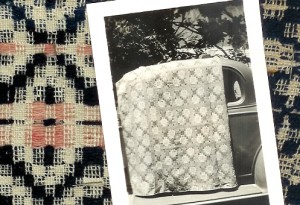
Lou Tate’s field work on weaving in Bowling Green
In 1935, Louisa Tate Bousman (1906-1979) was just beginning her career as a teacher, writer, collector and authority on the folk arts of weaving, spinning and dyeing. Within the next two years, she would present exhibits of Kentucky handweaving at New York’s Folk Arts Center and Louisville’s Speed Art Museum.
But “Lou Tate,” as she was known professionally, had already taken a great interest in documenting the rich tradition of weaving in her home town of Bowling Green. She contacted Mary Taylor Leiper at WKU’s Special Collections Library, who offered to show her the museum’s collection and put her in touch with local owners of significant handwoven textiles. Tate proposed that the results of her investigations be used to plan an exhibit at the museum, which she promised would be “intensely interesting.”
Tate summarized the results of her field work and gave a copy to the Kentucky Library & Museum. Although she made clear that her paper, “Handwoven Textiles,” had only scratched the surface of Bowling Green’s treasury of coverlets, counterpanes, shawls and quilts, she included not only photos of her discoveries but actual scraps of weaving – three-dimensional examples that brought to life the color combinations and textures lovingly created by weavers whose work had survived for generations, even though their names were often lost to history.
A finding aid for Lou Tate’s paper can be downloaded by clicking here, and a finding aid for her associated correspondence with Mary Leiper can be downloaded by clicking here. For more collections on weaving and folk art, search TopSCHOLAR and KenCat.


